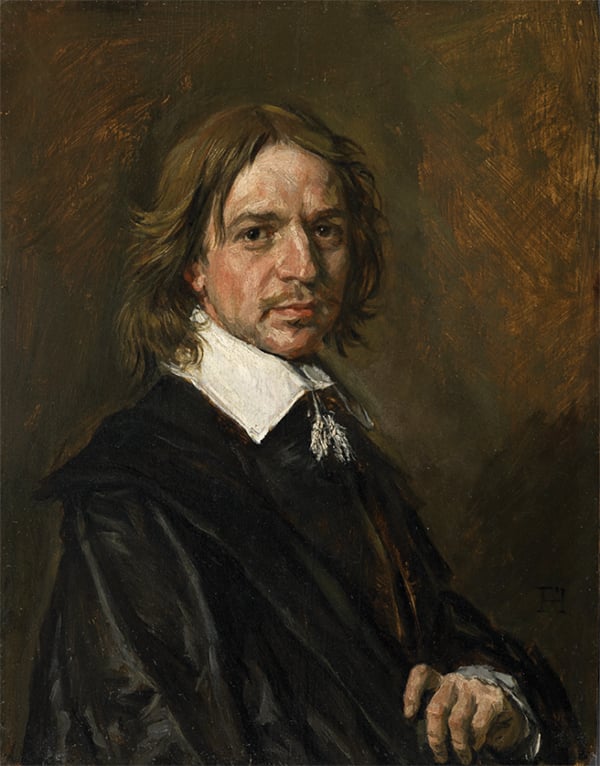
While revelations about presidential candidates dominate the mainstream news cycle in the lead-up to next month’s election, the number one scandal currently rocking the art world is the widespread forgery ring of Old Masters, the exact scope of which remains unknown.
A number of paintings have already been identified as suspicious, and rumors indicate there is more bad news to come. With Sotheby’s refunding the buyer of a purported Frans Hals portrait, purchased for $10 million in a 2011 private sale brokered by London dealer Mark Weiss, it seems more and more likely that the works may be forgeries.
Here’s what we know so far about this complicated story.
Lucas Cranach the Elder, Venus (1531). The painting is now believed to be a fake. ©Liechtenstein. The Princely Collections, Vaduz–Vienna.
1. The Prince of Lichtenstein’s Cranach painting was the first domino to fall.
As it unfolds, this scandal is looking more and more outrageous, with rumors that a forger produced works attributed to 25 separate Old Master artists. Collectors are thought to have spent as much as €200 million ($255 million) on the fakes.
The first warning sign was when French authorities seized Venus by Lucas Cranach the Elder earlier this year from the Caumont Centre d’Art in Aix, which was hosting an exhibition of the collection of the Prince of Liechtenstein.
With the Cranach’s authenticity in question, the art world began questioning other paintings that had come from the same source. Which leads us to…
Parmigianino, Saint Jerome. Courtesy of Sotheby’s.
2. Get to know the name Giulano Ruffini.
In the Knoedler forgery ring, the venerable gallery began selling Abstract Expressionist paintings from little-known Long Island dealer Glafira Rosales. Here, the original seller of all the paintings appears to be French dealer Giulano Ruffini.
Ruffini insists he is just a collector, and that he has never made any claims as to the authorship of the suspect works. According to Ruffini, he has simply approached dealers, and they have been the ones to identify his canvases as bonafide Old Masters.
Orazio Gentileschi, David Contemplating the Head of Goliath. Courtesy of the Weiss Gallery.
3. Could French civil engineer André Borie be the next Mr. X?
It’s unclear where Ruffini’s collection came from, but at least six of the works are said to have belonged to André Borie, a recipient of the Legion d’Honneur who worked on a number of major infrastructure projects for the French government.
Like forged Knoedler works said to have come from an anonymous collector, aka “Mr. X,” the paintings from the Borie collection, which include the Hals, the Cranach, Orazio Gentileschi’s of David with the Head of Goliath, and a Diego Velázquez Portrait of Cardinal Borgia, do not have an existing record of provenance. The blog Art History News found no evidence that Borie was a collector.
The Louvre museum in Paris. Courtesy of JACQUES DEMARTHON/AFP/Getty Images.
4. The paintings were widely accepted as genuine masterpieces.
London’s National Gallery displayed the supposed Gentileschi, a unique work painted on a piece of lapis lazuli. New York’s Metropolitan Museum of Art exhibited another suspect work, St. Jerome attributed to Parmigianino, also sold at Sotheby’s.
The Louvre started a fundraising campaign to buy the Hals for €5 million ($from Christie’s Paris after it was declared authentic by France’s Center for Research and Restoration. The museum called it a national treasure.
Even the experts reportedly couldn’t tell the difference.
James Martin’s expert report from the Knoedler forgery trial included examples of Jackson Pollock’s signature where one was misspelled “Pollok.” Courtesy of James Martin.
6. Technical analysis is succeeding where connoisseurship has failed.
James Martin’s Orion Analytical, a Williamstown, Massachusetts-based company which investigates artworks, outed the Knoedler paintings as forgeries. Orion’s technical analysis has similarly discredited the Hals painting by detecting modern materials that couldn’t be used by the artist.
This calls into question the long-held belief that art history experts can identify the hand of a master simply by looking at a work, and could have major implications for the Old Master market moving forward.